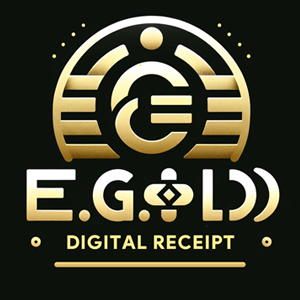
For more than 5,000 years, gold has been money. Empires rose and fell, paper currencies came and went, hyperinflations wiped out life savings overnight, yet gold retained its status as the ultimate store of value. From the Lydian stater in 600 BC to the Bitcoin believer’s hardware wallet in 2025, one question keeps resurfacing: what makes something endure as money across centuries and civilizations?
The answer is simpler than most crypto maximalists want to admit—and more hopeful than fiat doomers fear.
1. Gold is Scarce by Physics, Not by Promise
Every fiat currency in history eventually reached infinite supply because a government or central bank could always print more. The Roman denarius, the Byzantine nomisma, the French assignat, the Weimar mark, the Zimbabwe dollar, the Venezuelan bolívar—all followed the same path: debasement → inflation → collapse.
Gold cannot be printed. Its stock-to-flow ratio (the ratio of existing supply to new annual production) has hovered between 50 and 80 for centuries. Even the California Gold Rush of 1849, the largest supply shock in history, only dropped the ratio temporarily from ~70 to ~50. Today it sits around 60.
Bitcoin’s fixed 21-million cap and halving schedule were explicitly designed to replicate—and eventually exceed—this property. Satoshi Nakamoto didn’t invent scarcity; he digitized the oldest form of it.
2. Gold Has No Counterparty Risk
When you own physical gold, no institution can freeze it, seize it (without physically taking it), or make it worthless by decree. The same cannot be said of bank deposits, bonds, or even most crypto held on exchanges.
History is littered with examples:
- 1933: FDR’s Executive Order 6102 forced Americans to sell gold at $20.67/oz, then revalued it to $35 the next year.
- 1966: France under de Gaulle demanded gold instead of dollars from the Federal Reserve.
- 2008: Cypriot and Greek depositors lost access overnight.
Each time, physical gold holders kept what was theirs. The lesson for crypto investors is brutal but clear: “Not your keys, not your coins” is the 21st-century version of “Possession is nine-tenths of the law.”
3. Gold is Universally Recognized—Even When Trust Collapses
During the siege of Constantinople in 1453, citizens paid in hyper-debased Byzantine hyperpyron coins melted them down for the tiny amount of gold they still contained. In 1944 France, farmers demanded payment in gold Louis coins, not the Bank of France notes that were legal tender.
Gold requires no white paper, no GitHub repo, no governance vote, no KYC. A 5,000-year-old brand is hard to beat.
Bitcoin is only 16 years old. Ethereum is younger than most high-school seniors. Recognition takes time—sometimes generations.
4. Gold Survives Because It Fails Gracefully
Gold has been demonetized dozens of times (Bretton Woods in 1971 being the most famous), yet it never disappears. It simply waits. Paper currencies that lose monetary status become museum pieces or campfire kindling.
Cryptocurrencies die loudly and often—over 12,000 are already dead coins. But the ones that survive will likely follow gold’s pattern: slow, boring, relentless adoption by people who no longer trust the alternatives.
The Hard Truth for Crypto Investors
Gold’s greatest strength is also its greatest weakness: it is slow, clunky, expensive to store, impossible to send instantly across the planet. Bitcoin fixes this. Lightning Network, Ark, Fedimints—these are attempts to give gold-like money the wings of the internet.
But fixing gold’s flaws doesn’t automatically make something better money. It just makes it different money. The market will decide which properties matter most in each era.
The Timeline Problem
Gold had 5,000 years to prove itself. Bitcoin has had 16. It is irrational to demand that a teenager behave like a 5,000-year-old institution, but it is equally irrational to pretend the teenager is already the adult.
The real question is not “Will Bitcoin replace gold?” The better question is “Can Bitcoin survive long enough to be tested the way gold has been?”
Every empire that debased its currency thought it would be the exception. Every crypto project that promised infinite yield thought it had cracked the code. History is a graveyard of exceptions.
Gold is still here because it never promised to be more than it is: a lump of metal that is rare, durable, divisible, and—most importantly—nobody can make more of on a whim.
Crypto investors who understand that aren’t trying to “kill” gold. They’re trying to become the first digital asset in history to graduate from speculative experiment to something that outlasts the people who created it.
That’s the real game. And gold, silent and unchanging, is still the undisputed champion—until it isn’t.
NOTE
This Content is the copyrighted content of EE.GOLD. All rights are reserved. You are welcome to share or use our content only by including direct links to our website. Any other form of reproduction, distribution, or use without proper attribution is strictly prohibited.
This Content is intended solely for educational purposes. The information provided does not constitute financial or investment advice.
Please note that Digital Storage Receipt, Secure Storage Solutions, and Physical Gold Sales are the only services offered by EE.GOLD.
We strictly adhere to government regulations and are firmly against all illegal financial or investment activities globally.
For further inquiries, feel free to contact us through our official channels.










.png)

